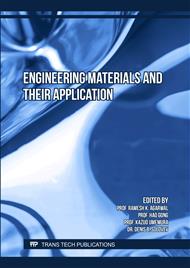p.115
p.127
p.137
p.143
p.149
p.155
p.163
p.169
p.177
Numerical and Experimental Investigation of Axially Loaded Columns with Spiral Reinforcement
Abstract:
The study object is compressed reinforced concrete elements of different flexibility with indirect spiral reinforcement, and the study subject is their strength. A deformation method has been proposed to calculate the strength of these elements. The method is based on new dependencies for determining stresses and strains in a concrete core and spiral reinforcement at all loading levels. These dependencies have been obtained theoretically and reflect the main features of the force resistance of the elements. In the studied structures, the concrete core inside the spiral operates under volumetric compression. Moreover, as the axial shortening strain grows, not only axial compressive stresses increase gradually but also transverse stresses caused by the restraining impact of indirect reinforcement change constantly. This feature significantly complicates the deformation-strength calculation, which is based on the strain diagrams of materials. When calculating strength, flexibility is considered by increasing the initial eccentricity by the deflection value. When determining the deflection, the variable stiffness of the compressed bar along its length is considered. The comparison of the calculation and experimental results on the strength of compressed elements with indirect reinforcement indicates the reliability of the method proposed.
Info:
Periodical:
Pages:
163-168
Citation:
Online since:
May 2023
Authors:
Price:
Сopyright:
© 2023 Trans Tech Publications Ltd. All Rights Reserved
Share:
Citation:


